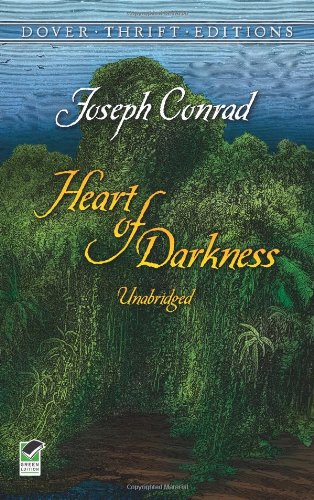All Nonfiction
- Bullying
- Books
- Academic
- Author Interviews
- Celebrity interviews
- College Articles
- College Essays
- Educator of the Year
- Heroes
- Interviews
- Memoir
- Personal Experience
- Sports
- Travel & Culture
All Opinions
- Bullying
- Current Events / Politics
- Discrimination
- Drugs / Alcohol / Smoking
- Entertainment / Celebrities
- Environment
- Love / Relationships
- Movies / Music / TV
- Pop Culture / Trends
- School / College
- Social Issues / Civics
- Spirituality / Religion
- Sports / Hobbies
All Hot Topics
- Bullying
- Community Service
- Environment
- Health
- Letters to the Editor
- Pride & Prejudice
- What Matters
- Back
Summer Guide
- Program Links
- Program Reviews
- Back
College Guide
- College Links
- College Reviews
- College Essays
- College Articles
- Back
Heart of Darkness by Joseph Conrad
In Joseph Conrad’s novella Heart of Darkness, Conrad uses Kurtz as a foil for Marlow, allowing the reader to understand why Kurtz was trapped in the “fascination of the abomination” (Conrad 6) and Marlow was capable of walking away. While both Kurtz and Marlow were immersed in darkness of the Congo, Kurtz had experienced a greater attachment to the Congo from which he could not let go. Conrad uses Kurtz’s actions to contradict and bring out those of Marlow’s, accentuating Marlow’s characteristics and personality.
Marlow and Kurtz were both captivated by the Congo, however in two completely different ways. Kurtz was a conqueror, he had come to the Congo in the hopes of “mending his fortunes” (6) in the collection of Ivory during the European colonization of Africa. But unfortunately for Kurtz he was, like all conquerors, greedy; and this soon got the best of him as Marlow states in the beginning of the book “They were conquerors…They grabbed what they could get for the sake of what was to be got.” (7) Kurtz personality and attributes conflict with, and consequently bring out Marlow’s disdain for material gain. Marlow came to the Congo not to get money like Kurtz, but to obtain knowledge, and for the sake of an adventure. Marlow speaks of his attraction to the Congo as “It fascinated me like a snake would a bird—a silly little bird.” (8)
Because of Kurtz’s Greed, he became attached to the Congo making him unable to escape from the “fascination of the abomination” (6) despite his “growing regrets, the longing to escape, the powerless disgust, the surrender—the hate” (6). Kurtz’s entrapment in the Congo due to his obsession of Ivory opposes and brings out Marlow’s dissolution with the Congo and his ability to leave whenever he pleased.
Kurtz—whether for his immense collection of ivory, or the respect and fear of his power—was worshiped. Conrad portrays Kurtz as a God-like figure, the savages as his worshipers, bringing Ivory to him as a tithe. Marlow even refers to the harlequin as “Kurtz’s last disciple” (58). This comparison of Kurtz to a holy figure brings out what the narrator had pictured Marlow as earlier, stating that Marlow “resembled an idol” (3), and that he looked like “a Buddha preaching in European clothes” (6). This goes along with the observation of the contrast between Kurtz and Marlow’s view of material gain, for Marlow’s actions represent that of Buddha, who rid himself of all personal desire only doing what was necessary for him to survive—very opposite of Kurtz who felt a great need to conquer and have control in order to get what he wanted, the ivory.
Conrad uses Kurtz’s very contrasting characteristics in order to highlight those of Marlow’s, explaining to the reader why Marlow was able to escape from the “utter savagery” that Kurtz was not able to, due to his attachment and obsession of control, which is shown in his domination of the ivory business. Marlow, and his detachment to money and profit, only becomes evident when Kurtz’s greed consumes him, leaving Kurtz “trapped” in the jungle, and in the savagery of not only the Congo, but Kurtz’s own mind. Kurtz’s actions show the reader how because Marlow had detached himself from desire, unlike Kurtz, he was able to leave the Congo unharmed physically, and mentally. Conrad creates this extremely powerful character Kurtz, who in turn contrasts with Marlow in order to express that letting go of the desire for power, is a power in itself.
Similar Articles
JOIN THE DISCUSSION
This article has 0 comments.

